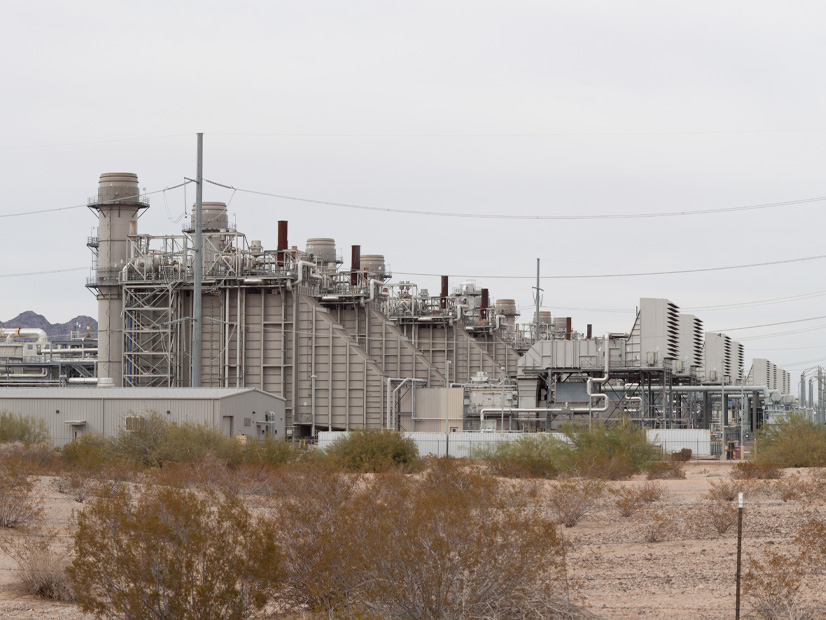
FERC on Friday approved a settlement between WECC and Arizona’s Salt River Project (SRP) for violations of NERC reliability standards carrying a $126,000 penalty (NP22-19), along with one between NERC itself and SPP with a penalty of $280,000 (NP22-23).
WECC also reached a settlement with the U.S. Bureau of Reclamation, also approved by FERC, that did not carry a monetary penalty (NP22-20).
NERC submitted the agreements to FERC on March 31, along with several settlements involving violations of NERC’s Critical Infrastructure Protection (CIP) standards (NP22-17, et al.); details about these settlements and the underlying violations were not disclosed, in keeping with FERC and NERC’s policy about such cases. FERC indicated on Friday that it would not review the settlements, leaving the penalties intact.
SRP Inherits Flawed Ratings System
WECC’s first settlement involved the Gila River Power Station, blocks 1 and 4 of which SRP acquired from Gila River Power and Sundevil Power in 2017 and 2018. WECC found several potential violations of reliability standard FAC-008-3 (Facility ratings) during a compliance audit in 2019.
Prior to the acquisition, the facility was operated by the Gila Bend Operating Co. (GBOC); when GBOC transferred operational responsibility to SRP, the utility adopted the former operator’s facility ratings methodology (FRM) as well. GBOC had contracted with a third party to complete its FRM and “did not have a method to evaluate their work,” according to WECC. SRP also failed to ensure the methodology was enough to ensure compliance after the acquisition.
During its audit, the regional entity discovered that the FRM did not meet several requirements of the standard, including the following:
- The methodology didn’t specify that facility ratings respect the most limiting rating of the equipment comprising the facility.
- GBOC did not list the facility rating for every generator step-up transformer in the facility ratings appendix, or state the conditions under which the ratings were meant to be used.
- The FRM “did not identify clearly the points of interconnection … with [the] transmission operator.”
WECC determined that the violations “posed a serious and substantial risk” to bulk power system reliability. To mitigate the shortcomings, SRP promised to implement its own FRM to the Gila River station, enter all equipment ratings into the asset database and facility ratings spreadsheet, and verify the accuracy of the data in the asset management database against the equipment’s nameplate ratings. WECC verified that the mitigating activities had been completed on April 27, 2020.
SPP Glitch Disables Alarms
NERC’s settlement with SPP stemmed from a violation of IRO-002-2 (Reliability coordination — facilities). The RTO self-reported the violation to SERC Reliability on Dec. 22, 2017, in its capacity as a reliability coordinator for the Eastern Interconnection; NERC later assumed responsibility for the violation, having taken over from SERC as the compliance enforcement authority for SPP on July 1, 2018.
Requirement R4 of the standard requires that each RC “have detailed real-time monitoring capability of its [RC] area and sufficient monitoring capability … to ensure that potential or actual system operating limit or interconnection reliability operating limit violations are identified.” SPP’s operations engineering staff had discovered in May 2017 that some of the alarm flags in the RTO’s real-time contingency assessment (RTCA) system were disabled, specifically for “some of an individual registered entity’s 345-kV and 500-kV facilities.”
Upon investigation, SPP found that a computer program used to verify the RTCA database was automatically disabling those flags, going undetected despite the RTO’s “multiple validation steps” meant to prevent such a condition. Staff determined that 1% of the total lines monitored by SPP, and 8% of the total transformers, were affected by the error.
SPP corrected the alarm flags and then implemented a workaround in the emergency management system to ensure the affected facilities were properly monitored. It then contacted the software vendor to notify them about the problem and seek a patch. This was done the same day it discovered the flaw. The RTO had found that the issue began on Jan. 1, 2016, meaning that the condition persisted for more than 16 months.
SPP’s mitigation activities, submitted with its self-report to SERC, included the workaround that it created the day of discovery, along with updating its processes to run the validation process that found the error every time the relevant software is updated. It also verified manually that the appropriate monitoring was in place and installed the vendor’s patch for the underlying issue. SERC verified that the activities were complete on March 21, 2018.
Reclamation Admits to Ratings Issues
Finally, WECC settled with the Bureau of Reclamation over a violation of FAC-008-3; once again, the RE found during a compliance audit that the elements recorded for a facility in the bureau’s ratings database were not compliant with the standard.
According to the settlement, auditors discovered that the facility’s elements listed in the database “were described in megawatts or megavolt-amperes.” This was inconsistent with the FRM, which specified that the elements should be rated “based on amps or current capability,” and could have led to confusion when dealing with elements that used different units of measure. In addition, the ratings included mechanical components, which goes against both the FRM and FAC-008-3.
According to a D.C. Circuit Court of Appeals ruling, the bureau is not subject to monetary penalties as a federal entity. However, it did submit a mitigation plan to WECC, which the RE accepted in April 2021. The plan includes training regional engineers on performing the facility ratings evaluations and updating the ratings to match the FRM’s requirements, along with clarifying compliance activities related to FAC-008-3 in its compliance bulletin. Mitigation activities were still ongoing at the time of the settlement’s submission to FERC.

